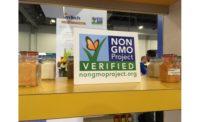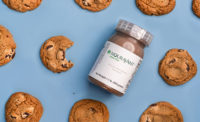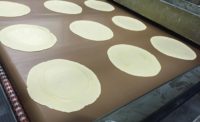Consumers are reading labels more, looking for products that are nutritious, with ingredients that are easy to understand and that work with their family’s budget. While there’s no official definition of “clean label,” consumers and the snack and bakery industry have their own definition in mind.
Prevailing definitions
“Since there is no official definition of ‘clean label,’ it’s up to consumers to define what clean label is to them, and how it will influence their purchases,” says Catherine Barry, director of marketing, National Honey Board, Firestone, CO. “Many consumers want to look at the ingredient listing on the back of a loaf of bread or cookie and recognize the ingredients on the list.”
Going clean label is ultimately about building trust with the shopper. They need to be assured that you will not try to feed them anything that they are uncomfortable with, explains Kurt Villwock, Ph.D., director of R&D, Fiberstar, Inc., River Falls, WI. “A clean-label food should come from a familiar and recognizable source that has not been overly refined or exposed to chemicals. Simple and short ingredient lists evoke feelings of trust from consumers.”
These clean labels also add a sense of wholesomeness and transparency to the product. “In the eyes of the consumer, clean label foods are recognized as simple, wholesome and authentic,” says Jeff Smith, director of marketing, Blue Diamond Almonds, Global Ingredient Division, Sacramento, CA. “Today’s consumers want to know where their food comes from and how it is produced, and they have interest in following a product’s journey from farm to table.”
One way to think of clean label would be in terms of “free from”—not always free from allergens, but from ingredients that can sometimes have negative connotations.
“Like ‘natural,’ ‘clean label’ is not a regulated term in commerce. At Daymon, we think of ‘clean label’ at retail in terms of ‘free from.’ A ‘free-from’ claim may be very basic, such as ‘no artificial colors, trans-fats or MSG,’ as ALDI has promised for its private brands other than SimplyNature, which has 125 excluded ingredients,” remarks Carl Jorgensen, director, thought leadership, Daymon, Stamford, CT. “The advantage of clean label’s ‘free-from’ approach is that it is clearly defined and defensible, unlike the vague term ‘natural.’”
While “natural” and “clean label” aren’t synonymous, they are related. “Clean label is the move within the food industry toward simplifying and including more natural ingredients in food products,” says Matthew Dahabieh, PhD, chief science officer, Renaissance BioScience, Vancouver, British Columbia. “It could also be applied to the removal of unhealthy compounds such as acrylamide, formed naturally during cooking.”
Consumers also want to be able to recognize what goes into their food. “Consumers are increasingly looking for simple, less-processed ingredients, with some familiarity—i.e., ingredients that a home cook or baker would have in their pantry. Or, at the very least, they want to know the reason some ‘less-pronounceable’ ingredients are in their food,” says Vanessa Brovelli, manager, product development, Bay State Milling, Quincy, MA.
“While analyzing the many food claims in today’s food production marketplace, it’s easy to see a desire for transparency,” says Erika Chance, associate director of brand strategy, Sullivan, Higdon & Sink, Kansas City, MO. “Our SHS FoodThink research illustrates that consumers are now looking for claims like ‘no hormones,’ ‘no antibiotics’ and ‘no trans fats,’ which points to their yearning for more information about the foods they eat.”
This might even mean looking at products that are good for the environment. “Clean label has really evolved to become twofold—as consumers embrace well-being and look to foods that support a healthy lifestyle, they also want to ensure that what they eat also positively supports the environment,” comments Molly Spence, director of North America, Almond Board of California, Modesto. “For product developers, this means ensuring that every ingredient sourced is produced responsibly and is nutritious, and delivers on taste, so consumers can feel great about what they are eating.”
Ingredient selections
Some ingredients naturally have clean-label appeal based on their familiarity to everyday consumers.. “Honey is the ideal ingredient in clean-label product development by the very nature of the ingredient. This all-natural sweetener comes straight from nature: from the bee, to the hive, to a food and beverage facility,” says Barry.
Barry suggests that, from a marketing perspective, honey may give product marketers a competitive advantage by how honey reads and looks on ingredient listings and front of packaging. Popular honey iconography, too, such as honeybees, honeycomb and honey dippers, signal to consumers that an all-natural sweetener and flavor is being used in a product, she notes.
Nuts are also a great ingredient naturally suited to clean-label snacks and baked goods. “Blue Diamond almonds are a clean-label ingredient that fit perfectly within two prominent consumer trends: a desire for natural foods, and a shift to more plant-based diets,” explains Smith. “They are well known for their nutritional and heart-healthy benefits. They’re a great source of key vitamins, minerals and other nutrients.”
Spence agrees. “In all their forms, California almonds fit into the holistic, clean-label approach. They are a natural ingredient produced using sustainable farming practices, backed by over 40 years of research conducted by the Almond Board of California. This means that product developers can feel really confident incorporating almonds in their many forms in any clean-label formulation and marketing it as such to consumers.”
Fruit ingredients are another natural fit for clean-label foods, notes the U.S. Highbush Blueberry Council, Folsom, CA. “The U.S. Highbush Blueberry Council is working with the industry to maximize consumers’ favorable view of blueberries, which spark visions of hearth and home, along with traditional wholesomeness,” says Tom Payne, industry specialist. “This demand for natural ingredients and clean label is a perfect setting for fruits like blueberries, which contain many naturally occurring antioxidants, such as vitamins C and E.”
For corn snacks, Healthy Food Ingredients, Fargo, ND, offers its Suntava Purple Corn, with non-GMO and certified-
organic options in whole, raw form, as well as in as flour, meal or grits. “All of our ingredients are single ingredients, with no additives. Since our ingredients are organic, they are mechanically processed, without the use of synthetic materials or chemicals,” notes Jennifer Tesch, chief marketing officer. “Our ingredient portfolio of flours, flakes and grits are minimally processed, utilizing the whole grain.”
Sweet potato ingredients are seeing more use in snacks and baked goods, and the ingredients resonate with clean-label ideals, notes Carolina Innovative Food Ingredients (CIFI), Nashville, NC. “Everything we do is clean label,” says Paul Verderber, vice president of sales. “Sweet potato ingredients give product developers the opportunity to add the health and functional attributes of sweet potatoes to many applications, while staying on trend with clean label.”
In August 2016, CIFI’s sweet potato ingredients received organic certification under the USDA National Organic Program. “We are proud to have met the rigorous standards of one of the leading organic certifiers in the U.S. so we can help brands provide organic options for their customers,” adds Verderber.
Manufacturers are being challenged to replace “unfriendly” ingredients with clean alternatives, while maintaining taste, texture and shelf life, notes Courtney Schumacher, marketing specialist, bakery, Kerry, Beloit, WI, which offers a portfolio of natural and organic flavors, seasonings, and dairy powders to allow for the removal of artificial flavors.
Other ingredients address functional needs. “Our broad range of Biobake enzymes and clean-label texture systems aid in processing and help maintain texture, while allowing manufacturers to remove products like L-cysteine, mono- and diglycerides, SSL, CSL, and DATEM,” says Schumacher.
Delavau Food Partners, Philadelphia, has a variety of clean label solutions to improve shelf life for bakery and snacks. “Encore Plus, in particular, delivers formula optimization in baked goods tailored to suit our partners’ needs,” says Matt Patrick, director of research and development. The company also offers Encore Soft, for a better eating experience; Encore Fresh antimicrobial solutions, for shelf-life extension; Encore Strong ingredients, for dough strength, volume, elasticity and tolerance; and Encore Relax extensibility solutions, for consistent pan and dough length. To boost nutritionals, Accent fortification solutions incorporate calcium and other desirable minerals into baked goods and chocolate.
Renaissance BioScience offers an acrylamide-reducing yeast. Acrylamide is an increasing concern because of the rising consumer and thus industry awareness, particularly in Europe, and the EU is moving toward establishing guidelines for acrylamide levels in a wide variety of foods, beginning in April 2018.
“Our acrylamide-reducing yeast, which was developed from a baker’s yeast, naturally produces an enzyme that consumes asparagine—the precursor to acrylamide—and requires no additional labeling. This is unlike the purified asparaginase, which does require labeling in some jurisdictions,” says Dahabieh.
Fiberstar specializes in producing citrus fiber, which has the unique distinction of being both clean label and having highly useful properties for product developers, comments Villwock. “Citri-Fi is made from non-GMO citrus fruits, such as oranges, lemons and limes, and can be labeled as ‘citrus fiber,’ ‘citrus flour’ or ‘dried citrus fiber,’ which resonates well in the clean-label markets.”
Citri-Fi 100 is useful for successfully troubleshooting texture and mouthfeel problems in clean-label foods, notes Villwock. “Formulators of clean label foods know all too well the ever-shrinking list of ingredients that their customers will permit in their food. Despite limited options, the food still must taste great and, furthermore, have the stability to make it through the rigors of shelf life and mass distribution.”
A maturing market
Many snack and bakery companies are embracing clean label in their products. “All bakery and snack categories are feeling some sort of impact from the clean-label trend,” remarks Barry. “Judging from new product introductions, the bread industry has fully embraced clean label, as have many salty snack categories, and sweet goods and desserts.” In these products, she adds, many consumers want to ensure that the calories upon which they are indulging come from all-natural ingredients.
Ingredion Inc., Bridgewater, NJ, recently conducted proprietary consumer research across eight bakery and snack categories—breads, cookies, cakes, tortillas/flatbreads, potato and tortilla chips, pretzels, and snack bars—and found that the top two claims that drove purchase intent with customers were “no artificial additives, preservatives or flavors” and “all natural,” notes Ricardo Rodriguez, marketing manager, confectionary and bakery. “Simple and transparent labeling continues to be a trend, particularly within extruded and puffed type of snacks and the bar market. These types of products continue to grow in the market, because consumers are willing to pay a premium for simple and clean.”
Tesch says that she is seeing the most clean-label growth in the better-for-you snacking and baking categories. “These include organic, non-GMO, plant-based protein, gluten-free and raw/less-processed foods.”
As consumers continue to increase their snacking habits, clean-label snack consumption will likely increase. “At Blue Diamond, we know that consumers are snacking more than ever, with more than 90 percent reaching for a snack at least once a day,” notes Smith. “They’re increasingly seeking clean-label snacks that have a health benefit related to their ingredient mix—whether those snacks are salty, savory or sweet, high or low calorie. Top of mind for consumers is portable snacks and nutrition bars made with simple, clean label ingredients that deliver functionality.”
Brovelli also cites the growth of clean-label snack and nutrition bars, with a focus on simple, healthy ingredients like dates or honey as binders in place of corn syrup, and nuts, grains and seeds for protein and fiber in place of concentrates and isolates.
Formulating clean-label snacks and baked goods will continue to pose challenges. “One of the clean-label challenges in baking is shelf life. Removing trans fats and substituting butter or cold-pressed oils can dramatically reduce shelf life,” comments Jorgensen.
But Jorgensen notes that he has seen the biggest growth in clean-label salty snacks and crackers: “These clean-label snacks are relatively simple to execute from an ingredient standpoint, and offer many opportunities for platform and flavor innovation.”
And unsurprisingly, millennials are a big reason why clean label has seen such strong levels of growth. “Consumers are recognizing that to support a healthy and active lifestyle, they need a healthy diet—this includes ‘healthy-ish’ snacks. To the millennial generation, this means clean label and/or organic,” explains Jennifer Stephens, vice president of marketing, Fiberstar.
“The millennial segment is a big opportunity for clean-label marketing, because they favor individuality and customizing what they eat,” adds Payne.
Artisan bread is also becoming more popular in the clean-label arena. “Artisan bread is gaining momentum,” says Brovelli. “Artisan baking has traditionally been clean label, with very few ingredients, and more focus on long fermentation times to achieve flavor and shelf life.”
Consumers are urging the removal of negative ingredients and desiring clean-label options for high-consumption categories and staples, says Soumya Nair, director of marketing insights, Kerry. This includes bread. “Baked breads are the most prominent, calling to attention the removal of DATEM, emulsifiers, CSL and SSL, among many others. The need for a simple ingredient deck that mimics a recipe has been higher than ever before.”











